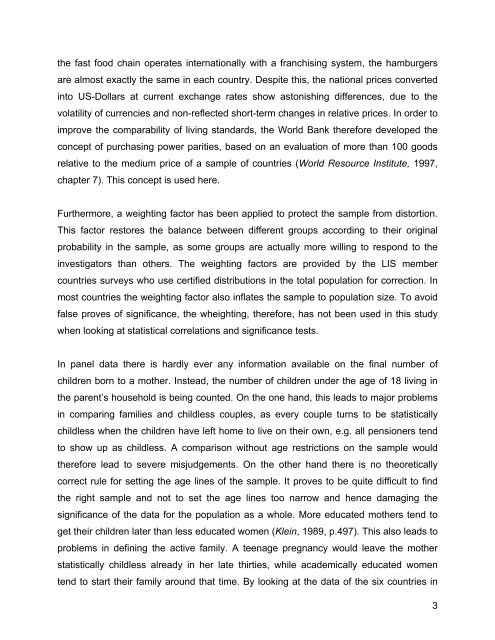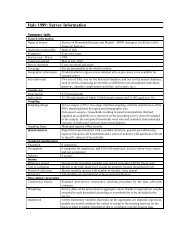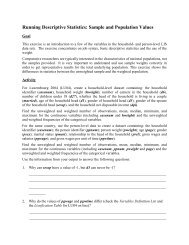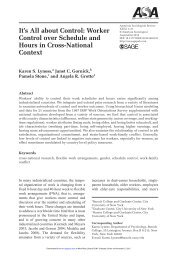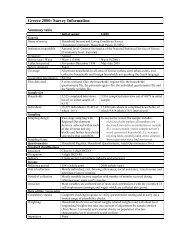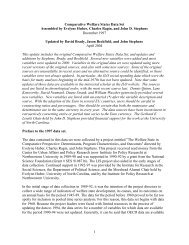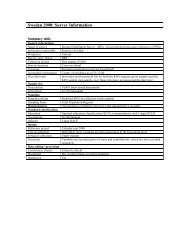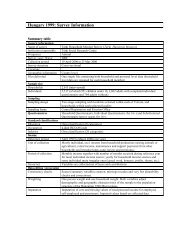Nicola Dickmann: - LIS
Nicola Dickmann: - LIS
Nicola Dickmann: - LIS
Create successful ePaper yourself
Turn your PDF publications into a flip-book with our unique Google optimized e-Paper software.
the fast food chain operates internationally with a franchising system, the hamburgersare almost exactly the same in each country. Despite this, the national prices convertedinto US-Dollars at current exchange rates show astonishing differences, due to thevolatility of currencies and non-reflected short-term changes in relative prices. In order toimprove the comparability of living standards, the World Bank therefore developed theconcept of purchasing power parities, based on an evaluation of more than 100 goodsrelative to the medium price of a sample of countries (World Resource Institute, 1997,chapter 7). This concept is used here.Furthermore, a weighting factor has been applied to protect the sample from distortion.This factor restores the balance between different groups according to their originalprobability in the sample, as some groups are actually more willing to respond to theinvestigators than others. The weighting factors are provided by the <strong>LIS</strong> membercountries surveys who use certified distributions in the total population for correction. Inmost countries the weighting factor also inflates the sample to population size. To avoidfalse proves of significance, the wheighting, therefore, has not been used in this studywhen looking at statistical correlations and significance tests.In panel data there is hardly ever any information available on the final number ofchildren born to a mother. Instead, the number of children under the age of 18 living inthe parent’s household is being counted. On the one hand, this leads to major problemsin comparing families and childless couples, as every couple turns to be statisticallychildless when the children have left home to live on their own, e.g. all pensioners tendto show up as childless. A comparison without age restrictions on the sample wouldtherefore lead to severe misjudgements. On the other hand there is no theoreticallycorrect rule for setting the age lines of the sample. It proves to be quite difficult to findthe right sample and not to set the age lines too narrow and hence damaging thesignificance of the data for the population as a whole. More educated mothers tend toget their children later than less educated women (Klein, 1989, p.497). This also leads toproblems in defining the active family. A teenage pregnancy would leave the motherstatistically childless already in her late thirties, while academically educated womentend to start their family around that time. By looking at the data of the six countries in3


